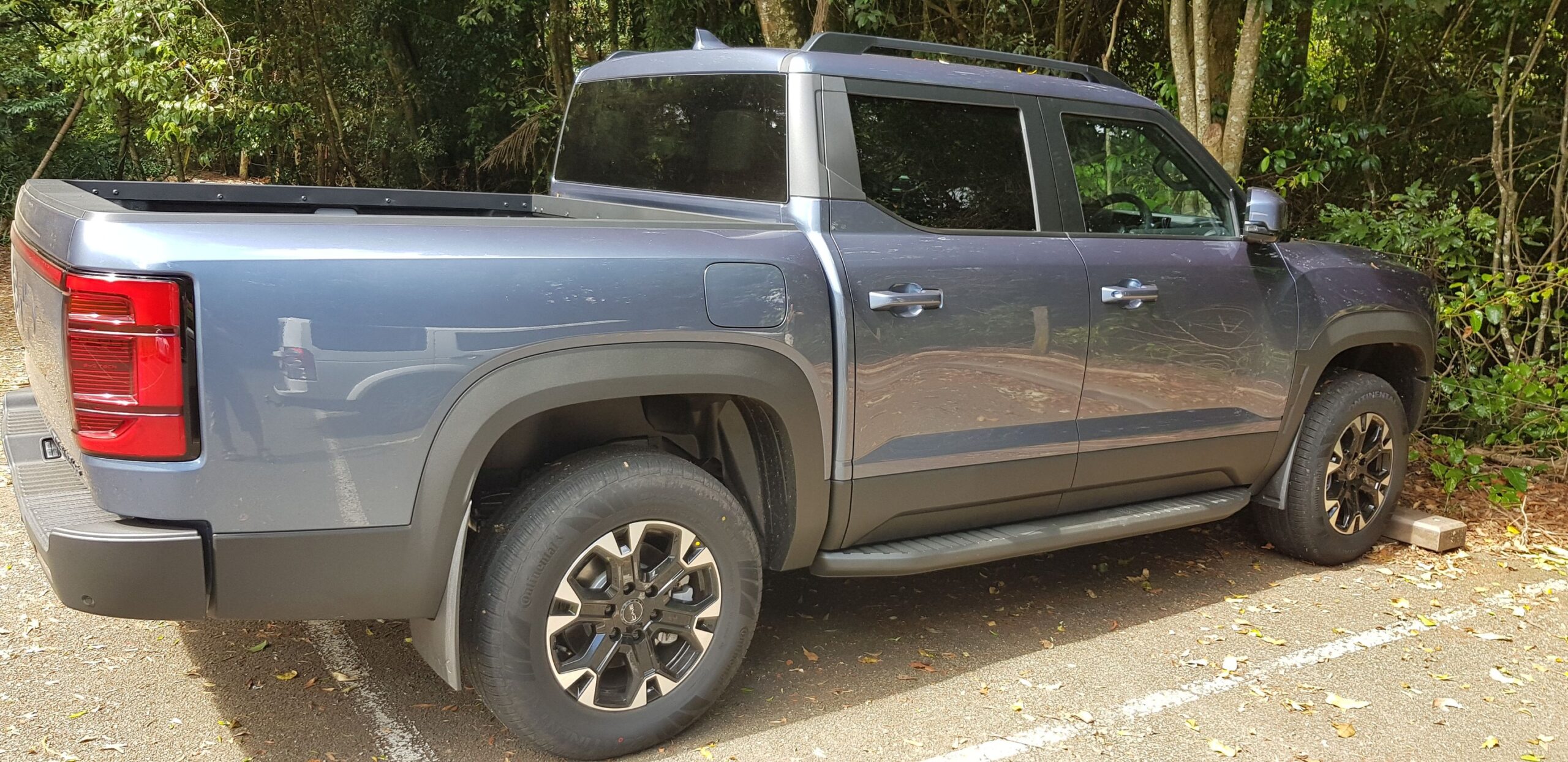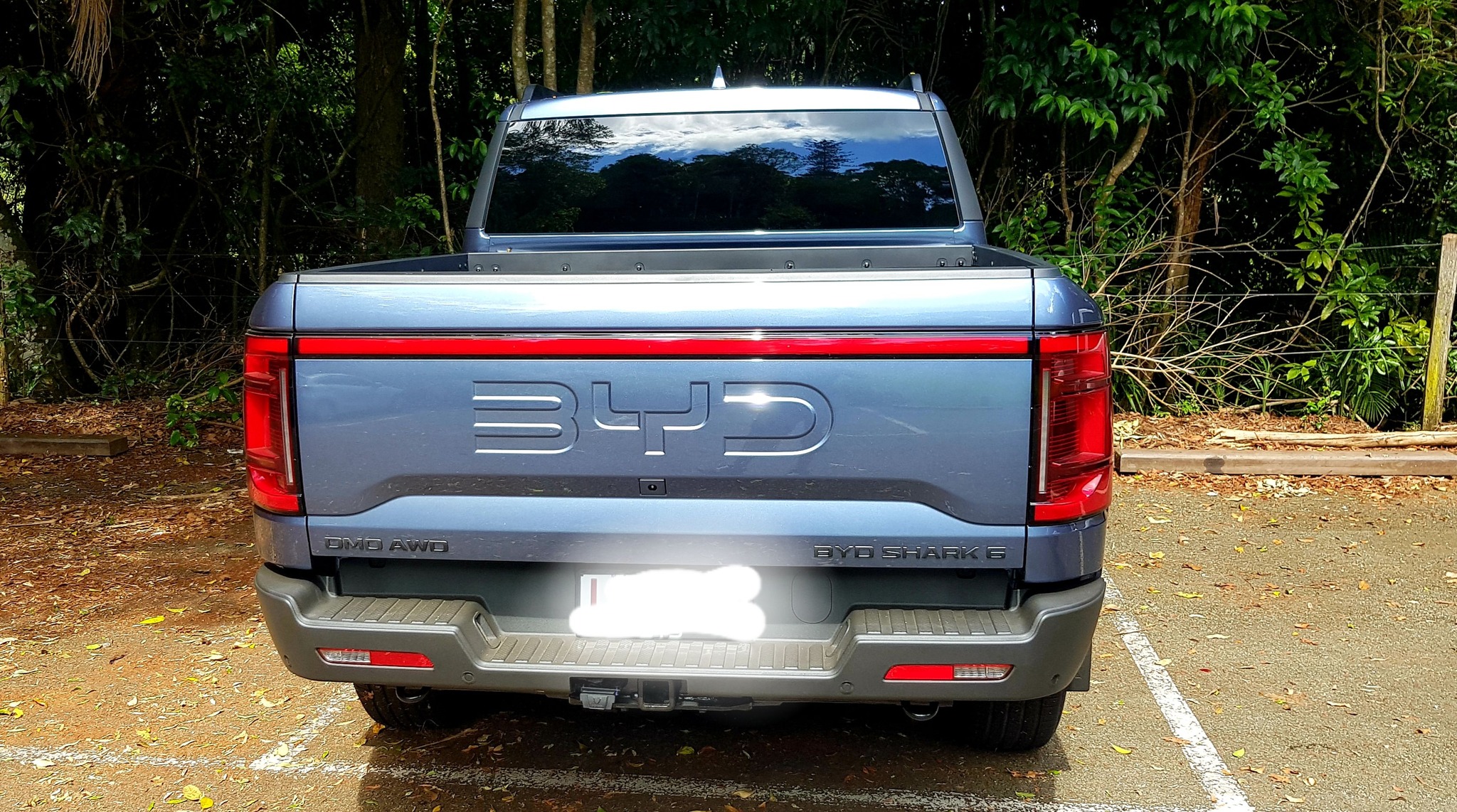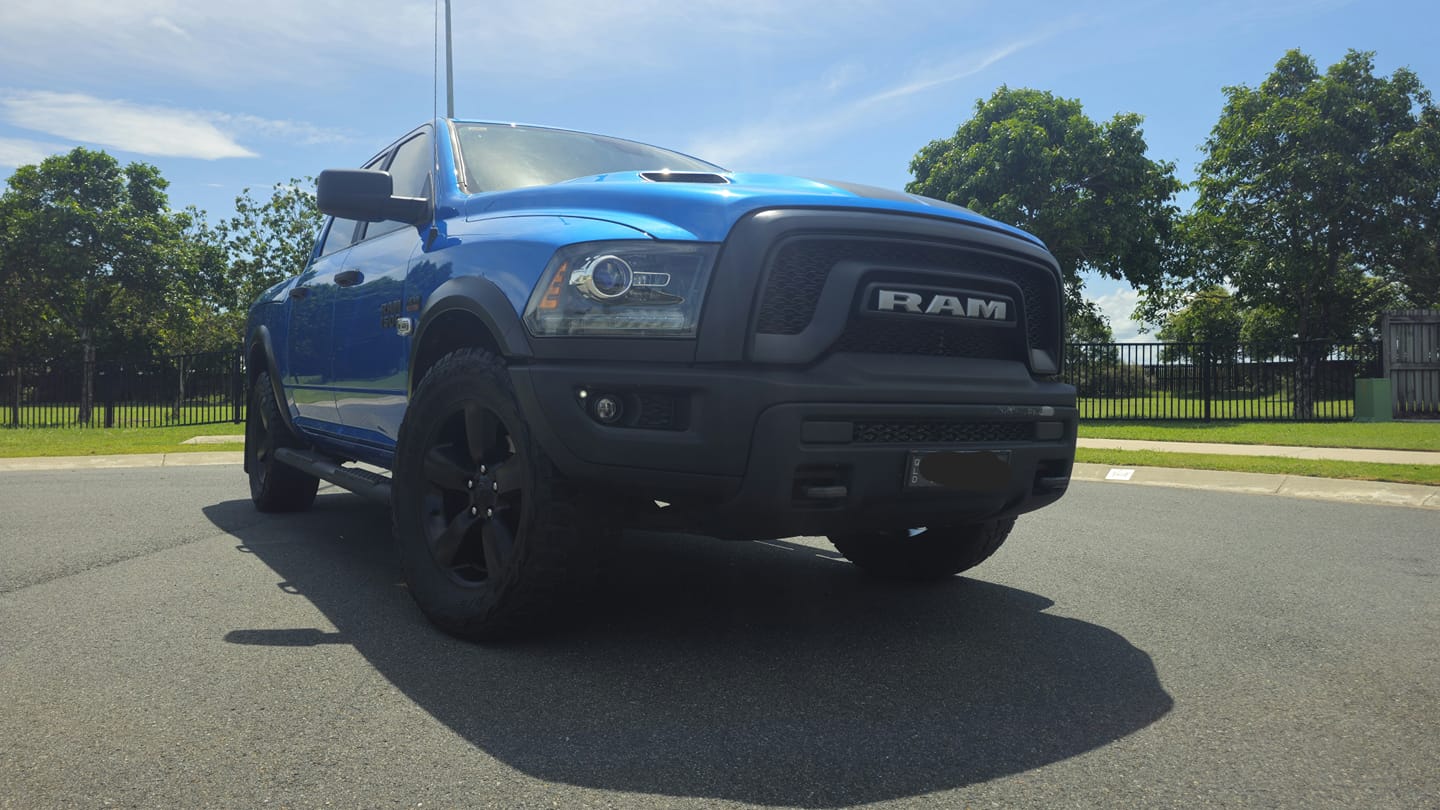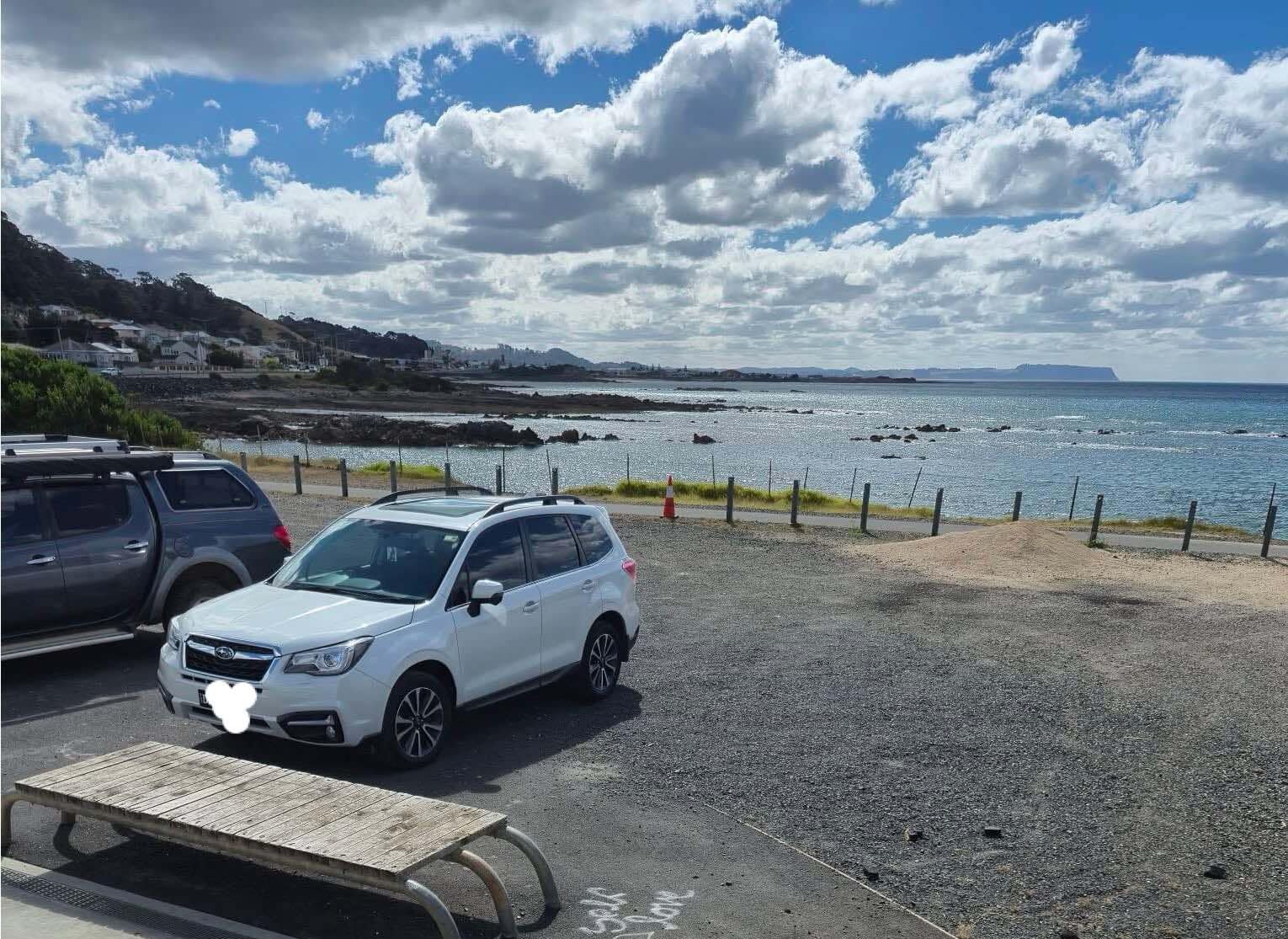
Sign up for daily news updates from CleanTechnica on email. Or follow us on Google News!
The Facebook pages devoted to the BYD Shark in Australia are exploding with stories of utes being delivered and new drivers’ experiences. Every time one is spotted in the wild, it sparks excitement and a new post. Lots of learning is taking place. Most of the comments are coming from longtime 4×4 owners — showing that the BYD Shark PHEV is not just being bought by inner city yuppies but by real ute drivers. Let’s listen into their conversation.

From the BYD Shark Owners Australia Facebook page, with 12,000 members, various issues have been raised, with answers forthcoming. It reminds me of when the Atto 3 first came out a couple of years ago. However, this time there is lots of praise for the BYD service staff. I was surprised by how little FUD was circulated on the page. What little there was elicited a solid response from satisfied drivers.
Let’s deal first with one of the issues that came up early. Why does the petrol motor rev so high in certain circumstances? It’s a little different driving a BYD PHEV. Here is the situation:

“I picked up my car today — love it — but I have had an issue that I don’t know what to do about and I genuinely need some guidance. I picked it up with a full tank of petrol and essentially a full charge — all went very smoothly. It was set to pure EV when I got it. I left it on EV and of course the battery reached the 25% mark and kicked over to HEV. All was good.
“But later as I was driving to work, I got stuck in traffic due to an incident and was down to a crawl for about 15km. When finally, past the incident, I proceeded to get back to 100kph but the engine kept revving its tits off and the car would struggle to even get up to 95kph. The revving was so bad that I had to back off to about 99kph and still it kept revving its tits off. I ended up flicking it back onto EV several times to stop the engine revving but of course it would switch back to HEV (as it should when at 25% State of Charge.)
“Am I missing something? Is there something I haven’t done right? Why was it revving so much? It was like it didn’t want to go up into higher gears. Any advice from Shark owners would be greatly appreciated right now.”
The answer from an experienced owner: “The car petrol engine revving high rpms is the engine trying to put max charge back into the battery to keep it above 25% low state of charge. (The engine is a generator, not like a normal engine with a transmission).”
And another experience: “I took my Shark up to the sunny coast from Toowoomba, didn’t have a full tank of fuel when I started and had the SOC set to 50%. On the return trip going through Melany and all the hills it revved pretty hard sometimes maintaining charge but I was only doing 60-80kph. Got to Esk when the car said to refuel, I ignored that because it said I had a range of 115km and I only had 80 km to get to Toowoomba. I could see the fuel gauge still had plenty, charge was 48% by then. Then I was watching the range as I’m driving and it said 51ks and minute later it went to 0ks. I pressed on and got back to Toowoomba still doing normal speed limits. Anyway, the lesson I learnt is you have to treat it different on long trips and now I would set 70% SOC to not let the battery get so low and have the engine work harder charging it.”
There also stories about vehicles being sold in order to get into a BYD Shark. The most common one seemed to be the Ford Raptor. “Wow, anyone want to buy a Raptor, the Shark leaves it for dead in most areas. So glad we have decent options now and I don’t have to buy another Ford. We are quickly becoming a BYD family. If you haven’t test driven an EV or a PHEV please do it you’ll be blown away with the tech and reliability.”
As would be expected, this post provoked a lot of comment. Here is a selection:
“Cool car and all, but as you have just taken ownership of the Shark, it seems a bit early to make a judgement on its reliability. Watching the forums with interest.”
“After doing way too many motors and gear boxes in the Fords and having the headache of trying to get them through warranty, I don’t think I could get much worse. So far BYD’s customer care has been excellent with the other vehicles that we had purchased.”
“I have a Mitsubishi Triton and a BYD on order. My Triton has given us 7 years without a single issue on and off road. The Shark is yet to do that, I will reserve my view till I own it for a while.”
And how are the Ranger lovers reacting? “I used to follow the Ranger forum but had to leave it because of the constant whinging about unreliability. Some tried to moderate and saying due to so many being sold a few bad eggs happen from time to time but it was endless complaints. Hoping for better time with the Shark team.”
“I still have my PX1 as I just spent $3000 fixing gear selector, driveline damper & clutch … things the Shark doesn’t have.”
A dissenting voice: “The Shark is miles behind the Raptor (to avoid the diesel fumes, possibly?) The Raptor is a beast off road. Super strong with braced chassis and diffs. Actually, has low range. Magnificent suspension. Shark is a good road car and light duty off road. Suspension alone makes the Raptor so much better. If you never go off road then Shark is comparable especially for the price.”
And in answer: “I’m also coming from a Raptor, but think the Shark is 3–4 years ahead in every way. I think the Chinese have left the yanks and Japanese sleeping at the wheel, I can’t believe how well made these cars are and advanced over other mainstream cars. It’s like in the 60’s when everyone bagged the Toyota’s and now they’re sitting on top, but for how long?”
From a driver who had a disappointing time with Ford service. “Hoping I’ll have a better time with BYD. So far, the customer service has been excellent.”
A little more dissention: “The Raptor is an offroad performance ute the Shark is a hybrid ute with offroad capabilities. They aren’t even in the same class mate.” And the response: “You’re right mate, they’re in a different class. Raptor is slower and costs 30k–40k more. 40k allows for a lot of modifications, especially to a car that has no diffs to get hung up.”
From someone who just bought a Raptor and now wonders if he did the right thing: “I also am a new generation Raptor owner and am considering selling to go the Shark, any chance you can give me the pros and cons you have found between the 2? For example: The Raptor suspension is amazing on and off road, how’s the Shark? Raptor’s software is shit and slow to use, how’s the Shark?”
This got a prompt response: “The BYD Shark, as an electric vehicle, represents a shift towards smarter, more efficient, and sustainable transportation. Ford, despite being a strong player in the ICE market, seems to be lagging in terms of digital innovation and adapting to the EV revolution. It’s telling that even Ford’s CEO has been seen driving a Chinese-made Xiaomi car, which speaks volumes about where the industry is heading. The future is electric, and it’s clear that the game is changing. It’s no longer just about horsepower or towing capacity—it’s about innovation, sustainability, and digital integration.”

This next questioner was concerned about towing, especially in the rural areas. There is a great video answering this question in detail. You can watch it here. I especially like the drag race on the motorway with a RAM, which was also towing see it at about 10 minutes. The BYD Shark was pulling about 2.5 tons, and the RAM about 3.5. The BYD was getting 20L/100km. This might not be good enough for most people wanting to tow. The sceptics are waiting to see more real world examples, and are concerned about how the small petrol engine/generator can handle it.
Responses: A few examples of fuel consumption while towing were provided. The Raptor — 14L/ 100 on a good day. “I also have the new GX Lexus and it gets 16 towing the same trailer. I’m sure the Shark won’t be as bad towing as these two.” Another drives a Pajero that tows 2.5 tons and uses 15.5L/100 km.

One correspondent was concerned about electromagnetic frequencies from an EV damaging his health. He also claimed EVs depreciate too quickly and wouldn’t handle water. He was dealt short shrift. “So, diesel fumes are healthier?” As for EMF — “better rip out all of the wiring from your house especially any connected to a high current device, and stop typing on a computer or using a phone that has wifi.”
I thought I would be inclusive, so I did a shoutout to our New Zealand cousins and got a similar responses on their Facebook page.
“I have owned a bunch of Ford Rangers, these Sharks drive a lot better and are a higher quality build than the Rangers I have had. The drive experience is really amazing for such a big truck. Everything just works well, the software, the comfort, the features, the ride quality. I need to pass 2,000kms before doing towing or off-road but will let you know how that goes as I do a fair amount of weekend towing and some light off-roading in sand and farms.”

“It’s a whole new driving experience if you haven’t driven an EV before. No diesel clatter or gear changes, just a smooth quiet application of torque.”
One poster just didn’t like the looks: “The front just looks awful. If it weren’t for that, I’d be all over that car.” But others disagreed with him: “I personally like the look of the Shark including the front. Sure, they’ve got BYD branding everywhere, but I think it’s a nice-looking Ute, coming from an older generation Amarok which I think still looks better than the latest generation one.”
From another Amarok owner: “You can’t deny the tech packed into it. It’s fantastic for the price point. I knew I had to replace my Amarok at some stage but couldn’t see anything that ticked my boxes in terms of tech, looks, performance, price point. Until the Shark!”

One of my correspondents was concerned that I was doing a “puff” piece and urged me to acknowledge the issues he and some other purchasers were experiencing. “Rather than doing an a typical fan puff piece about the Shark, like media releases from their local CEO, how about one about 8 week accessories delays, no nfc cards as promised/sold, no sd card slot like in the manual, app and sim taking weeks to a month to work towing software issues and how BYD Australia and EVDirect remain silent about it all and leave it up to the customer to ask for transparency in a day an age of instant communication at the fingertips of BYD is almost unforgiveable. Perhaps a generic A.I written apology to customers rather just blaming the ports and saying they are working around the clock (except Sundays, or evenings/nights/early mornings.) That all said, very much looking forward of getting out of this Kia Optima and into a Great White.”
There you go.
Many at CleanTechnica are excited about the Shark ute. You can read previous articles here, here, and here. When you look at the vehicles being replaced, you realise how much less CO2 will be going into the atmosphere. Hopefully more compelling electric utes will follow.
With this sort of public acclaim, it’s no wonder so many BYD Sharks have sold. Last time I talked with BYD, over 4000 had been ordered. That number is expected to rise as people spot the ute in the wild. Australia currently has a fringe benefits tax exemption for PHEVs. That ceases in April. So, we might not know the real demand level until after then. BYD had previously announced the launch of the Shark 07 fully electric ute to be offered in June. But now it appears that they may be postponing it. We’ll just have to wait for the next announcement.
Chip in a few dollars a month to help support independent cleantech coverage that helps to accelerate the cleantech revolution!
Have a tip for CleanTechnica? Want to advertise? Want to suggest a guest for our CleanTech Talk podcast? Contact us here.
Sign up for our daily newsletter for 15 new cleantech stories a day. Or sign up for our weekly one if daily is too frequent.
CleanTechnica uses affiliate links. See our policy here.
CleanTechnica’s Comment Policy




